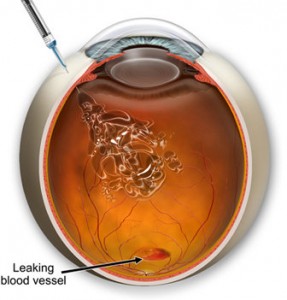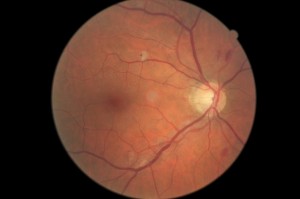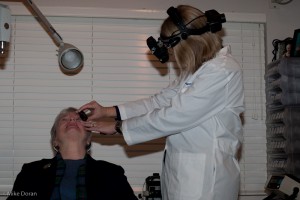November is Diabetes Awareness Month.
To begin the month of diabetes awareness, let’s start by dispelling some myths:
Myth: Diabetes is not that serious of a disease.
Fact: Diabetes causes more deaths a year than breast cancer and AIDS combined. Two out of three people with diabetes die from heart disease or stroke.
Myth: If you are overweight or obese, you will eventually develop type 2 diabetes.
Fact: Being overweight is a risk factor for developing this disease, but other  risk factors such as family history, ethnicity and age also play a role. Unfortunately, too many people disregard the other risk factors for diabetes and think that weight is the only risk factor for type 2 diabetes. Most overweight people never develop type 2 diabetes, and many people with type 2 diabetes are at a normal weight or only moderately overweight.
risk factors such as family history, ethnicity and age also play a role. Unfortunately, too many people disregard the other risk factors for diabetes and think that weight is the only risk factor for type 2 diabetes. Most overweight people never develop type 2 diabetes, and many people with type 2 diabetes are at a normal weight or only moderately overweight.
Myth: Eating too much sugar causes diabetes.
Fact: The answer is not so simple. Type 1 diabetes is caused by genetics and unknown factors that trigger the onset of the disease; type 2 diabetes is caused by genetics and lifestyle factors.
Being overweight does increase your risk for developing type 2 diabetes, and a diet high in calories from any source contributes to weight gain. Research has shown that drinking sugary drinks is linked to type 2 diabetes.
The American Diabetes Association recommends that people should limit their  intake of sugar-sweetened beverages such as soda, energy and sports drinks and fruit drinks, to help prevent diabetes. These beverages will raise blood glucose and can provide several hundred calories in just one serving!
intake of sugar-sweetened beverages such as soda, energy and sports drinks and fruit drinks, to help prevent diabetes. These beverages will raise blood glucose and can provide several hundred calories in just one serving!
Myth: People with diabetes should eat special diabetic foods.
Fact: A healthy meal plan for people with diabetes is generally the same as a healthy diet for anyone – low in fat (especially saturated and trans fat), moderate in salt and sugar, with meals based on whole grain foods, vegetables and fruit. Diabetic and “dietetic” foods generally offer no special benefit. Most of them still raise blood glucose levels, are usually more expensive and can also have a laxative effect if they contain sugar alcohols.
Myth: If you have diabetes, you should only eat small amounts of starchy foods, such as bread, potatoes and pasta.
Fact: Starchy foods are part of a healthy meal plan. What is important is the portion size. Whole grain breads, cereals, pasta, rice and starchy vegetables like potatoes, yams, peas and corn can be included in your meals and snacks. The key is portions. For most people with diabetes, having 3-4 servings of carbohydrate-containing foods per meal is about right. Whole grain starchy foods are also a good source of fiber, which helps keep your gut healthy.
Myth: People with diabetes can’t eat sweets or chocolate.
Fact: If eaten as part of a healthy meal plan, or combined with exercise, sweets and desserts can be eaten by people with diabetes. They are no more “off limits” to people with diabetes than they are to people without diabetes. The key to sweets is to have a very small portion and save them for special occasions so you focus your meal on more healthful foods.
Myth: You can catch diabetes from someone else.
Fact: No. Although we don’t know exactly why some people develop diabetes, we know diabetes is not contagious. It can’t be caught like a cold or flu. There seems to be some genetic link in diabetes, particularly type 2 diabetes. Lifestyle factors also play a part.
Myth: People with diabetes are more likely to get colds and other illnesses.
Fact: You are no more likely to get a cold or another illness if you have diabetes. However, people with diabetes are advised to get flu shots. This is because any illness can make diabetes more difficult to control, and people with diabetes who do get the flu are more likely than others to go on to develop serious complications.
Myth: If you have type 2 diabetes and your doctor says you need to start using insulin, it means you’re failing to take care of your diabetes properly.
Fact: For most people, type 2 diabetes is a progressive disease. When first diagnosed, many people with type 2 diabetes can keep their blood glucose at a healthy level with oral medications. But over time, the body gradually produces less and less of its own insulin, and eventually oral medications may not be enough to keep blood glucose levels normal. Using insulin to get blood glucose levels to a healthy level is a good thing, not a bad one.
Myth: Fruit is a healthy food. Therefore, it is OK to eat as much of it as you wish.
Fact: Fruit is a healthy food. It contains fiber and lots of vitamins and minerals. Because fruits contain carbohydrates, they need to be included in your meal plan. Talk to your dietitian about the amount, frequency and types of fruits you should eat.
For more facts check out the American Diabetes Association.











